Various - Birds, Illustrated by Color Photography, Vol. 2, No. 6
Здесь есть возможность читать онлайн «Various - Birds, Illustrated by Color Photography, Vol. 2, No. 6» — ознакомительный отрывок электронной книги совершенно бесплатно, а после прочтения отрывка купить полную версию. В некоторых случаях можно слушать аудио, скачать через торрент в формате fb2 и присутствует краткое содержание. Жанр: periodic, Биология, Природа и животные, foreign_edu, на английском языке. Описание произведения, (предисловие) а так же отзывы посетителей доступны на портале библиотеки ЛибКат.
- Название:Birds, Illustrated by Color Photography, Vol. 2, No. 6
- Автор:
- Жанр:
- Год:неизвестен
- ISBN:нет данных
- Рейтинг книги:3 / 5. Голосов: 1
-
Избранное:Добавить в избранное
- Отзывы:
-
Ваша оценка:
- 60
- 1
- 2
- 3
- 4
- 5
Birds, Illustrated by Color Photography, Vol. 2, No. 6: краткое содержание, описание и аннотация
Предлагаем к чтению аннотацию, описание, краткое содержание или предисловие (зависит от того, что написал сам автор книги «Birds, Illustrated by Color Photography, Vol. 2, No. 6»). Если вы не нашли необходимую информацию о книге — напишите в комментариях, мы постараемся отыскать её.
Birds, Illustrated by Color Photography, Vol. 2, No. 6 — читать онлайн ознакомительный отрывок
Ниже представлен текст книги, разбитый по страницам. Система сохранения места последней прочитанной страницы, позволяет с удобством читать онлайн бесплатно книгу «Birds, Illustrated by Color Photography, Vol. 2, No. 6», без необходимости каждый раз заново искать на чём Вы остановились. Поставьте закладку, и сможете в любой момент перейти на страницу, на которой закончили чтение.
Интервал:
Закладка:
Various
Birds, Illustrated by Color Photography, Vol. 2, No. 6 / December, 1897
THE ORNITHOLOGICAL CONGRESS
WE had the pleasure of attending the Fifteenth Congress of the American Ornithologists’ Union, which met and held its three days annual session in the American Museum of Natural History, New York City, November 9-11, 1897. Dr. C. Hart Merriam, of the Department of Agriculture, Washington D.C., presided, and there were present about one hundred and fifty of the members, resident in nearly all the states of the Union.
The first paper read was one prepared by J. C. Merrill, entitled “In Memoriam: Charles Emil Bendire.” The character, accomplishments, and achievements of the deceased, whose valuable work in biographizing American birds is so well known to those interested in ornithology, were referred to in so appropriate a manner that the paper, though not elaborate as it is to be hoped it may ultimately be made, will no doubt be published for general circulation. Major Bendire’s services to American ornithology are of indisputable value, and his untimely death eclipsed to some extent, possibly wholly, the conclusion of a series of bird biographies which, so far as they had appeared, were deemed to be adequate, if not perfect.
Mr. Frank M. Chapman, the well known authority on birds, and whose recent books are valuable additions to our literature, had, it may be presumed, a paper to read on the “Experiences of an Ornithologist in Mexico,” though he did not read it. He made, on the contrary, what seemed to be an extemporaneous talk, exceedingly entertaining and sufficiently instructive to warrant a permanent place for it in the Auk , of which he is associate editor. We had the pleasure of examining the advance sheets of a new book from his pen, elaborately illustrated in color, and shortly to be published. Mr. Chapman is a comparatively young man, an enthusiastic student and observer, and destined to be recognized as one of our most scientific thinkers, as many of his published pamphlets already indicate. Our limited space precludes even a reference to them now. His remarks were made the more attractive by the beautiful stuffed specimens with which he illustrated them.
Prof. Elliott Coues, in an address, “Auduboniana, and Other Matters of Present Interest,” engaged the delighted attention of the Congress on the morning of the second day’s session. His audience was large. In a biographical sketch of Audubon the Man, interspersed with anecdote, he said so many interesting things that we regret we omitted to make any notes that would enable us to indicate at least something of his characterization. No doubt just what he said will appear in an appropriate place. Audubon’s portfolio, in which his precious manuscripts and drawings were so long religiously kept, which he had carried with him to London to exhibit to possible publishers, a book so large that two men were required to carry it, though the great naturalist had used it as an indispensable and convenient companion for so many years, was slowly and we thought reverently divested by Dr. Coues of its wrappings and held up to the surprised and grateful gaze of the spectators. It was dramatic. Dr. Coues is an actor. And then came the comedy. He could not resist the inclination to talk a little – not disparagingly, but truthfully, reading a letter never before published, of Swainson to Audubon declining to associate his name with that of Audubon “under the circumstances.” All of which, we apprehend, will duly find a place on the shelves of public libraries.
We would ourself like to say something of Audubon as a man. To us his life and character have a special charm. His was a beautiful youth, like that of Goethe. His love of nature, for which he was willing to make, and did make, sacrifices, will always be inspiring to the youth of noble and gentle proclivities; his personal beauty, his humanity, his love-life, his domestic virtues, enthrall the ingenuous mind; and his appreciation – shown in his beautiful compositions – of the valleys of the great river, La Belle Rivière , through which its waters, shadowed by the magnificent forests of Ohio and Kentucky, wandered – all of these things have from youth up shed a sweet fragrance over his memory and added greatly to our admiration of and appreciation for the man.
So many subjects came before the Congress that we cannot hope to do more than mention the titles of a few of them. Mr. Sylvester D. Judd discussed the question of “Protective Adaptations of insects from an Ornithological Point of View;” Mr. William C. Rives talked of “Summer Birds of the West Virginia Spruce Belt;” Mr. John N. Clark read a paper entitled “Ten Days among the Birds of Northern New Hampshire;” Harry C. Oberholser talked extemporaneously of “Liberian Birds,” and in a most entertaining and instructive manner, every word he said being worthy of large print and liberal embellishment; Mr. J. A. Allen, editor of The Auk , said a great deal that was new and instructive about the “Origin of Bird Migration;” Mr. O. Widmann read an interesting paper on “The Great Roosts on Gabberet Island, opposite North St. Louis;” J. Harris Reed presented a paper on “The Terns of Gull Island, New York;” A. W. Anthony read of “The Petrels of Southern California,” and Mr. George H. Mackay talked interestingly of “The Terns of Penikese Island, Mass.”
There were other papers of interest and value. “A Naturalist’s Expedition to East Africa,” by D. G. Elliot, was, however, the pièce de résistance of the Congress. The lecture was delivered in the lecture hall of the Museum, on Wednesday at 8 p. m. It was illustrated by stereopticon views, and in the most remarkable manner. The pictures were thrown upon an immense canvas, were marvellously realistic, and were so much admired by the great audience, which overflowed the large lecture hall, that the word demonstrative does not describe their enthusiasm. But the lecture! Description, experience, suffering, adventure, courage, torrid heat, wild beasts, poisonous insects, venomous serpents, half-civilized peoples, thirst, – almost enough of torture to justify the use of Coleridge’s Ancient Mariner in illustration, – and yet a perpetual, quiet, rollicking, jubilant humor, all-pervading, and, at the close, on the lecturer’s return once more to the beginning of civilization, the eloquent picture of the Cross, “full high advanced,” all combined, made this lecture, to us, one of the very few platform addresses entirely worthy of the significance of unfading portraiture.
C. C. Marble.THE MOUNTAIN BLUEBIRD
IN an early number of Birds we presented a picture of the common Bluebird, which has been much admired. The mountain Bluebird, whose beauty is thought to excel that of his cousin, is probably known to few of our readers who live east of the Rocky Mountain region, though he is a common winter sojourner in the western part of Kansas, beginning to arrive there the last of September, and leaving in March and April. The habits of these birds of the central regions are very similar to those of the eastern, but more wary and silent. Even their love song is said to be less loud and musical. It is a rather feeble, plaintive, monotonous warble, and their chirp and twittering notes are weak. They subsist upon the cedar berries, seeds of plants, grasshoppers, beetles, and the like, which they pick up largely upon the ground, and occasionally scratch for among the leaves. During the fall and winter they visit the plains and valleys, and are usually met with in small flocks, until the mating season.
Nests of the Mountain Bluebird have been found in New Mexico and Colorado, from the foothills to near timber line, usually in deserted Woodpecker holes, natural cavities in trees, fissures in the sides of steep rocky cliffs, and, in the settlements, in suitable locations about and in the adobe buildings. In settled portions of the west it nests in the cornice of buildings, under the eaves of porches, in the nooks and corners of barns and outhouses, and in boxes provided for its occupation. Prof. Ridgway found the Rocky Mountain Bluebird nesting in Virginia City, Nevada, in June. The nests were composed almost entirely of dry grass. In some sections, however, the inner bark of the cedar enters largely into their composition. The eggs are usually five, of a pale greenish-blue.
Читать дальшеИнтервал:
Закладка:
Похожие книги на «Birds, Illustrated by Color Photography, Vol. 2, No. 6»
Представляем Вашему вниманию похожие книги на «Birds, Illustrated by Color Photography, Vol. 2, No. 6» списком для выбора. Мы отобрали схожую по названию и смыслу литературу в надежде предоставить читателям больше вариантов отыскать новые, интересные, ещё непрочитанные произведения.
Обсуждение, отзывы о книге «Birds, Illustrated by Color Photography, Vol. 2, No. 6» и просто собственные мнения читателей. Оставьте ваши комментарии, напишите, что Вы думаете о произведении, его смысле или главных героях. Укажите что конкретно понравилось, а что нет, и почему Вы так считаете.




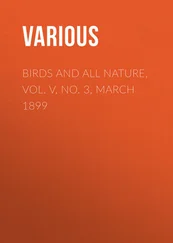
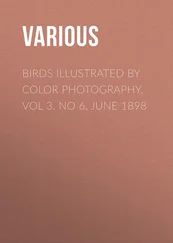
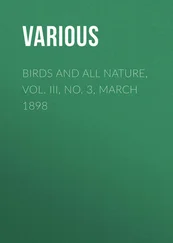
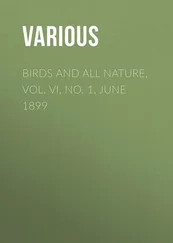
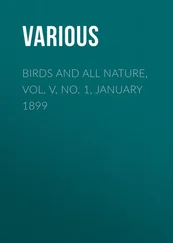

![Various - Birds Illustrated by Color Photography [January, 1898]](/books/746296/various-birds-illustrated-by-color-photography-ja-thumb.webp)

![Various - Birds Illustrated by Color Photography [February, 1898]](/books/746443/various-birds-illustrated-by-color-photography-fe-thumb.webp)